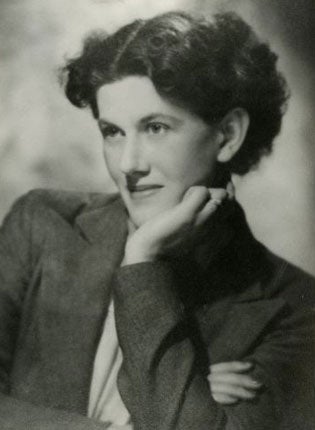Diana Raymond: Writer whose novels were infused with wit and metaphysics

Diana Raymond was the author of 24 novels, a memoir, theatre criticism, a number of lyric poems and a play about one of her heroes, John Keats.
She fell out of the public eye in the last 15 years of her life, but without losing one jot of her own passion for life and literature. Her piercing intelligence, endless curiosity and a capacity for friendship drove her on right up to the evening of her death at the age of 92.
Born Diana Young in 1916, she lost her father a year later in the First World War. Before the war, William Young had collaborated with Dover Wilson on his book Poetry of the Age of Shakespeare and might have had a distinguished academic career himself.
Asitwas, he managed several books of criticism and an anthology of Keats’s poetry. He passed on his literary talents to his only child, who, after an excellent education at Cheltenham Ladies College, paid for by the Officers’ Families Fund, began her first novel at the age of 16 sitting in an ABC café in the Harrow Road, London.
She was learning shorthand and typing in a converted butcher’s shop by day, but in her lunch breaks and at night she scribbled away at fiction.
That first effort, a dramatic tale of a lonely and suicidal young man alone in London,wasn’t accepted, but the second one was. Her cousin, Pamela Frankau, eight years older and already an established novelist, had encouraged her to stick at it.
That second novel, The Door Stood Open, was the first of three she wrote under her maiden name. But by 1940 she had met and married an older and much more famous writer, Ernest Raymond, changed her writing name, and begun a relationship that was to be central to everything she did and which lasted until Ernest’s death in 1974. Initially a little overshadowed by his reputation, she quickly broke free as a writer and began to find her own very distinctive voice, even through the 1940-41 London Blitz, a job with the Ministry of Food and the birth of her son Peter.
By the mid-Fifties, critics like Peter Quennell and Richard Church had recognised her power and, in particular, her capacity for creating wonderfully believable and often hilarious characters; a witty and observant eye and ear, as alive as Jane Austen’s to the absurdities of human behaviour, were two of Raymond’s great gifts. But she knew how to deal with the darkness and mysteriousness of the world, too, taking as an epigraph for her 1958 novel, Strangers’ Gallery, a quote from one of her favourite writers, Sir Thomas Browne: “Indeed no man truly knows another. This I perceive in myself; for I am in the dark to all the world, and my nearest friends behold me but in a cloud.”
This mix of wit and metaphysics can be found in many of Diana Raymond’s novels, including her 1969 political novel, Are You Travelling Alone, her haunting 1978 romance, The Dark Journey, her very popular 1988 social satire Lily’s Daughter and in the dark and tense 1995 thriller, Roundabout, about the disappearance of a small girl at Hampstead Heath Fair. Her last published novel, The Sea Family (1997), was a kind of return journey to the London of 1940, and went further back in time to the Victorian era as the heroine discovers troubled secrets in the pages of her grandmother’s diary.
Moving between these two time frames, Raymond managed to bring together and resolve the tensions of the world her husband Ernest had been born into and the one that the couple had married into.
Alongside her fiction, particularly after Ernest’s death, Raymond was following a parallel path, a spiritual journey, which often found expression in poetry. This path took a particularly touching and personal form in a privately printed memoir, Are We Nearly There?, written when she was in her late 80s. This is an account of her gradual journey towards the Anglicanism which became her greatest source of strength. Raymond was never going to approach Christian theology without a tussle and she tested and questioned Anglicanism relentlessly. But unlike Stevie Smith, whom Raymond much admired, she said “yes” to it.
This gave her a special serenity in her last years, which overcame the disappointment she felt at not being “fashionable”, the frustrations of increasing deafness and the aches and pains of age. She read voraciously right up to the end and loved company, particularly that of her two granddaughters, Catherine, a drama teacher, and Helen, a librarian and budding writer.With the help of neighbours, shemade that important weekly journey to her local church whatever the weather.
Piers Plowright
Diana Joan Young, writer: born 25 April 1916; married 1940 Ernest Raymond (died 1974, one son); died 16 February 2009.
Join our commenting forum
Join thought-provoking conversations, follow other Independent readers and see their replies
Comments